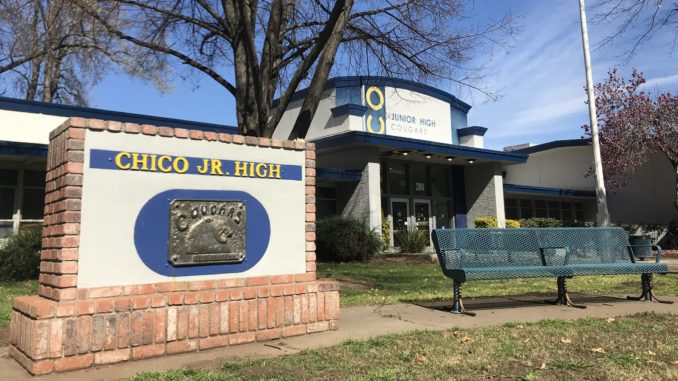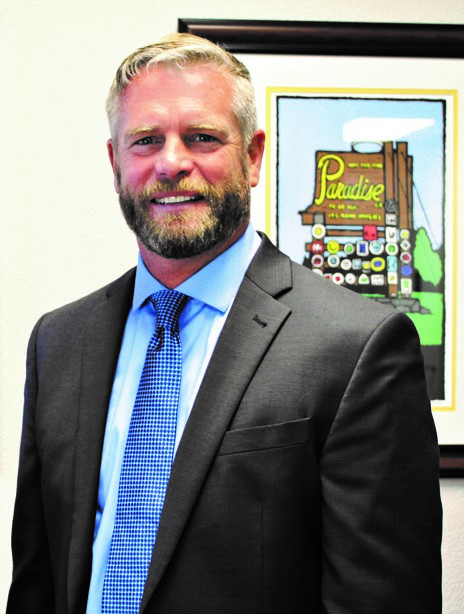
Over the 12 months that Californians have navigated coronavirus waves, few tacks have brought more backsplash than restrictions on in-person learning.
Parents and politicians, notably Republican leaders in the North State, have rallied around fully reopening schools. Proponents of such a plan in the Chico Unified School District (CUSD) have grown so inflamed that they’ve threatened to recall the four school board members (out of five) who continue to support a more gradual approach.
California government and county Public Health officials have issued orders as well as preventative measures in accordance with guidelines from the U.S. Centers for Disease Control and Prevention. The state has left it up to individual school districts to interpret the orders and implement guidelines as they see fit; Chico Unified’s policies have ebbed and flowed with the transmission curve (see “Back to school conundrum”). With Butte County under the state’s strictest limits in the purple/widespread tier—though anticipated to move to the red/substantial tier, perhaps as early as this week, as the CN&R goes to press—CUSD’s board has chosen to forgo returning to full in-person instruction due to the complications of making a wholesale change at this juncture in the school year.
While physical health effects of the virus garner mass attention, mental health impacts have drawn concern among educational and pediatric professionals. Psychological disturbances among children and teens have increased since the start of the pandemic and distance learning—most significantly, suicidal thoughts and plans.
Butte County Behavioral Health has recorded a 25 percent increase in crisis calls about suicide from school-age kids, predominantly teens, or their parents. CUSD does not track this data specifically but, anecdotally, is experiencing a comparable spike. Enloe Medical Center’s emergency room has had twice as many visits for pediatric mental-health crises in the past six months (14) than in all of 2019.
This matches a national trend reported by the CDC: hospital visits for mental-health emergencies increasing 24 percent among ages 5-11 and 31 percent among ages 12-17.
“This is a tough time for the community,” said Reidun Waddell, crisis services supervisor for county Behavioral Health. “[But] it’s not just a Butte County issue, it’s nationwide.”
Waddell, a social worker who’s worked for the county for 10 years, has seen mostly teenagers at the Behavioral Health drop-in centers. They come in with “depression, anxiety, maybe things they haven’t been feeling before or have been exacerbated because of the pandemic,” she said. “Sometimes those feelings lead to someone feeling like the only way they can cope with it is suicide—and so we have been seeing more of those cases, and the acuity where they’ve researched ways, they have a plan in place, they’ve been thinking about what they might do to end their life.
“That acuity piece is more than we’ve noticed in the past, more than a year or two ago.”
This swell has cascaded onto an already overflowing network. The U.S. Health Resources and Services Administration designates rural Northern California as a shortage area for mental health professionals. As an epicenter of disasters since 2017, with Oroville Dam Spillway crisis followed by the Camp Fire and North Complex Fire, along with a prevalence of adverse childhood experiences (or ACEs) among the highest in the state, Butte County holds compounded trauma.
Waddell and her boss, Behavioral Health Director Scott Kennelly, told the CN&R that they believe their department is up to the challenge. Particularly with kids in crisis, they say they find the resources to respond in the timely manner demanded. Local pediatricians, especially those who treat the most distressed youth in Enloe’s emergency room, see gaps.
“While mental health care is increasingly entering the national dialogue and the stigma of seeking and receiving help is slowly diminishing, there are still so many challenges in helping our psychiatric patients, especially if they are children,” said Dr. Anna Robertson, a Chico pediatrician who practices at Enloe. “California is a relatively populous state compared to most of our neighboring states, yet we are still limited in our inpatient pediatric psychiatry units. They are usually at full capacity, and now with the pandemic in full swing, we’ve noticed they are even more overwhelmed. So children who aren’t safe to go home, because they are at risk to themselves or to others, are unfortunately stuck in a limbo….
“With limited resources and overwhelmed care systems, care for our most vulnerable children is extremely challenging,” she added. “Of course, the most severely affected children are taken care of first and foremost. However, the incidence and severity of children’s mental health conditions is rising during this pandemic; our already limited psychiatric care systems are getting dangerously burdened.”
Cause and effect
Putting aside epidemiological reasons for sheltering-in-place mandates, behavioral health and education professionals have noted a clear connection between distance learning and mental health. The effects may translate into behavior changes only—“acting up” or withdrawing, for instance—but may elicit serious problems, as the surge statistics show, such as suicide ideation.
Daymi Trowbridge, a 15-year school psychologist who oversees mental health programs for the Chico school district, said while some youths actually thrive in the at-home environment, others have missed out on what her administrative colleague John Shepherd calls “the hidden curriculum” of on-campus learning. After starting the school year with fully distant learning, this semester CUSD has moved to a hybrid model: part in-person, part at-home. Families still concerned about close contact could opt for remote learning.

“For many [students] whose support comes from their friends at school, from their teachers, for whom school is a safe place, then you see a student who’s more isolated from that support and is now more at risk,” Trowbridge said. “In the spring, when everyone was 100 percent online, it was very difficult to reach some students, so [counselors] would call and text and instant message and email every day—but if a student didn’t want to talk, there was no way to force that conversation and force that support.
“With the hybrid model, it’s been much easier to catch kids while they’re at school…. There are some students who are still online-only, but at least we can make home visits and schedule meetings in person [where] we can spread out in a room or meet outside.”
The district has taken steps to address mental health proactively. Trowbridge said each school site has a wellness team that meets regularly—weekly or biweekly—to discuss how students are doing. CUSD also has expanded mental health screenings, which it has conducted for five years in conjunction with BCBH, to a component of sports physicals and 10th-grade vision and hearing checks. Secondary schools utilize that screening, a five-question survey, when students visit the health office.
Still, even with more direct contacts, issues can persist.
“Kids at home are dealing with stress, and stress is a significant impact on kids while they develop,” Kennelly said. “Parents or caretakers really need to pay attention to their kids, check in with them regularly to make sure they’re doing OK, [see] if they are struggling, talk to them, make sure they’re not isolating … and make sure they have structured activities.”
Along with stressing vigilance for warning signs of suicide-level distress, Kennelly and Waddell said Behavioral Health has a range of youth services (see info at the end of this article). Pandemic restrictions have forced some offerings online, but the department still operates drop-in centers and a crisis unit along with the inpatient psychiatric unit. BCBH has 22 clinicians working in its youth programs.
That’s not always enough. Robertson, not casting aspersions on Behavioral Health, said the dearth of pediatric psychiatry in the region means Enloe often must fulfill this need for youth in peril.
“They can’t be discharged home, but placement to an inpatient psychiatric facility may take days sometimes weeks,” Robertson said. “So where do we put them? We have no choice but to do our best in keeping them safe in our regional hospital.
“Unfortunately, we don’t have everything these kids need. We do our best, but resources are still limited. Mental health professionals are limited, and those who are available are incredibly overwhelmed.”
Chico has just three locally based pediatric psychiatrists, though Behavioral Health and health-care systems employ telemedicine to broaden access. In fact, three of BCBH’s four psychiatrists reside out of county.
As for reopening schools fully—which the Durham Unified School District did March 1 and the state is encouraging all schools to do, with $2 billion in incentives—Kennelly offered a measured opinion.
“Obviously we’re taking our lead from the CDC and Public Health, and they’re doing whatever they can to make sure our communities are safe,” he said. “We would love to see schools open as soon as possible, but we realize the key to that is having enough people vaccinated to turn the tide….
“While our youth can’t get vaccinated yet, their parents certainly can—and if anything, that’s something that will speed up the ability to get kids back in classrooms and playing sports and [doing] things that are more normal to them.”
Robertson concurred, elaborating that circumstances have evolved over 12 months.
“I think initially it was very important to close schools to limit spread,” she said. “While older children fare relatively better with a COVID-19 infection, they may bring it home and infect their relatives.
“Now that we’re slowly reaching ‘community immunity’ by ways of people recovering from their previous infections or obtaining the vaccine, we have to reweigh the risks and benefits of school closures. Ultimately, our children are going through a mental health epidemic, and I think the cure lies in getting them back to school as quickly and safely as possible.”
Latest updates:
-CUSD plans: chicousd.org
-State plans: schools.covid.ca.gov
-County status: buttecounty.net/ph/covid19
Support:
-Crisis assistance: 891-2810 or buttecounty.net/behavioralhealth/help-in-crisis
-Local drop-in sites: buttecounty.net/behavioralhealth/youth-services
-Warning signs: suicideispreventable.org




Be the first to comment